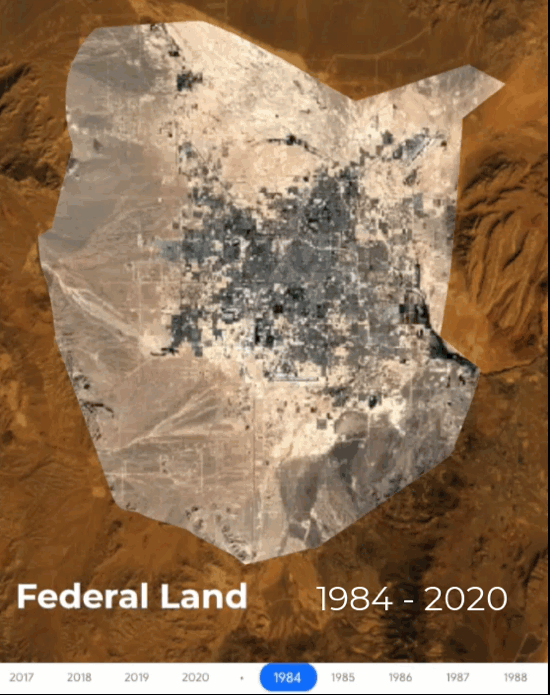- Essay – Inflation, Interest Rates and Can Las Vegas Continue Its Run?
- Potential Investment Properties
- In the News
- Market Trend
- About the Fernwood Real Estate Investment Group
Inflation and interest rates are probably the two most talked-about subjects lately. As you probably know, inflation is at the highest level in 4 decades, and mortgage interest rates are rapidly increasing. How does this impact your investments? This month’s article explores the impact of inflation and rising interest rates for Las Vegas investment real estate. I will also answer a frequent question from our clients and prospective clients: can Las Vegas continue its run?
Note: All data included applies only to the segment of single family properties we target.
Is Your Income Beating the Inflation?
In the current environment, where CDs and similar investments do not keep pace with inflation and the stock market is incredibly volatile, a reliable passive income that outpaces inflation is more important than ever. How are Las Vegas rental income properties performing in this light? See the chart below.
Rents for the segment we target have risen by 15% annually since 2020. So, if you have rental income from Las Vegas properties, your income is still increasing, despite inflation. If you have properties in locations where rent growth is not keeping pace with inflation, you should consider a 1031 exchange.
I’ve talked to several people who own properties where rents are not keeping pace with inflation. Many feel no need to take any action because the rents are slowly increasing. I believe most do not understand that unless rents rise faster than inflation, you will not have the additional dollars needed to continue buying the same goods and services as you did in the past.
For example, suppose you own a property, and the monthly rent when you purchased the property was $1,000/Mo. And, that the rent increases 4% annually and inflation remains at 8%. What will happen to your buying power over ten years? See the table below.
| End of year | 0 | 1 | 2 | 3 | 4 | 5 | 6 | 7 | 8 | 9 | 10 |
|---|---|---|---|---|---|---|---|---|---|---|---|
| Monthly rent at a 4% Growth Rate | 1000 | 1040 | 1081 | 1124 | 1168 | 1214 | 1262 | 1312 | 1364 | 1418 | 1474 |
| Amount of rent to keep pace with 8% inflation | 1000 | 1080 | 1166 | 1259 | 1359 | 1467 | 1584 | 1710 | 1846 | 1993 | 2152 |
| Loss of buying power at 4% rent growth ($) | 0 | -40 | -85 | -135 | -191 | -253 | -322 | -398 | -482 | -575 | -678 |
| Loss of buying power at 4% rent growth (%) | 0% | -3.7% | -7.3% | -10.7% | -14.1% | -17.2% | -20.3% | -23.3% | -26.1% | -28.9% | -31.5% |
So, even though the rent increased 4% annually, your buying power declined by 31.5% over ten years! The takeaway is that the number of dollars is not what matters; buying power is what matters. If your buying power is declining, so will your standard of living.
Will Las Vegas Rents Continue Rising?
We believe that rents will continue increasing for the foreseeable future. Why do we believe this? Rents are driven by demand, or scarcity. Below is a chart showing 13 months of rental inventory for our target segment.

Typically, about 3 to 4 months of rental inventory is common at this time of year. In February, we had only one month. Plus, the rental properties we put on the market receive multiple applications within days. So, with the shortage of rental inventory and the high level of demand, we believe rents are likely to continue increasing for the foreseeable future.
Interest Rates and Initial Return
If inflation persists, I believe interest rates will continue to rise. Rising interest rates impact new purchases in two ways:
- Lower initial return
- Potentially reduce the rate at which prices are increasing.
I will address these separately.
Initial Return
Below is a model of a property at 4%, 4.5%, 5%, and 5.5% interest rate.
| Purchase Price | 425000 | 425000 | 425000 | 425000 |
|---|---|---|---|---|
| Rent (Mo) | 2300 | 2300 | 2300 | 2300 |
| Fees (Mo) | 47 | 47 | 47 | 47 |
| Insurance (Yr.) | 450 | 450 | 450 | 450 |
| Property Tax (Actual) | 2337 | 2337 | 2337 | 2337 |
| Management (%) | 8% | 8% | 8% | 8% |
| Closing Cost (%) | 3.0% | 3.0% | 3.0% | 3.0% |
| Estimated Rehab | 15000 | 15000 | 15000 | 15000 |
| Loan Rate (%) | 4.0% | 4.5% | 5.0% | 5.5% |
| Loan Term (Yrs.) | 30 | 30 | 30 | 30 |
| Down (%) | 25% | 25% | 25% | 25% |
| Debt Service (Mo) | 1,522 | 1,615 | 1,711 | 1,760 |
| Maintenance | 0 | 0 | 0 | 0 |
| Vacancy | 0 | 0 | 0 | 0 |
| Acquisition Cost | ||||
| Down Payment | -106250 | -106250 | -106250 | -106250 |
| Estimated Rehab | -15000 | -15000 | -15000 | -15000 |
| Closing Cost | -12750 | -12750 | -12750 | -12750 |
| Total | -134000 | -134000 | -134000 | -134000 |
| Recurring Expenses (Mo) | ||||
| Debt Service | -1,522 | -1,615 | -1,711 | -1,760 |
| Management | -184 | -184 | -184 | -184 |
| Insurance | -37 | -37 | -37 | -37 |
| Property Tax | -194 | -194 | -194 | -194 |
| Maintenance | 0 | 0 | 0 | 0 |
| Vacancy | 0 | 0 | 0 | 0 |
| Fees | -47 | -47 | -47 | -47 |
| Total | -1,984 | -2,077 | -2,173 | -2,222 |
| Income (Mo) | ||||
| Rent | 2300 | 2300 | 2300 | 2300 |
| Return (Financed) | ||||
| Cash Flow (Mo) | 316 | 223 | 127 | 28 |
| ROI | 2.8% | 2.0% | 1.1% | 0.3% |
As you can see, as the interest rate rises, your initial return declines. Fortunately, rents are rapidly increasing, so your return will increase over time. Also, rent is not where you make the most money. Appreciation is where you make the most money, as you will see later in this article.
Will Price Increases Level Out in Las Vegas?
Like rents, prices are driven by demand or scarcity. The best indicator of demand is inventory levels. Historically, six months of inventory is considered a balanced market. Below is a screenshot from the MLS (03/28/2022) showing the total months of inventory. As you can see, inventory levels continue to fall and are down to 0.9 months. With little inventory and high demand, I see no reason price increases will level out.

What about the property segment we target? See the chart below.
As you can see, the inventory level continues to fall. Also, we consistently compete with 10-20 offers on the properties that we target, so we know the demand is huge. Based on inventory and demand, I believe rising interest rates will have little impact on prices.
I recently read an “expert” who stated that homes are unaffordable today compared to 2008. Is this true? No. See the chart below.
If you ignore inflation, then prices have exceeded 2007/2008 levels. However, inflation is real, so we have to compare inflation-adjusted 2007/2008 prices to what it is today. Today, we are approximately $44/SF below the peak prices of 2007/2008. So, if prices were reasonable then, why are they unaffordable today when they cost less?
What is diving demand in Las Vegas?
-
Jobs – There is a shortage of workers in Las Vegas, and help wanted signs are everywhere. And, with over $20B in new construction underway, and another $5B to $7B announced, the need for workers will increase, which will bring more people to Las Vegas who will need housing. The result will be increasing prices and rents.
-
Blue State Exodus – Almost every day, I read another article about companies and people fleeing blue states in general and California in particular. Rising inflation will likely increase the exodus rate. As more people flee blue states, more people will come to Las Vegas for jobs and the low cost of living. The increasing population will increase the demand for housing, driving up prices and rents.
-
Pro-Business Environment – Nevada has no state income taxes, low property tax, low-cost property insurance, reasonable traffic, low crime rates, reasonable property prices, and lower cost of just about everything. Las Vegas is also investor-friendly. Evictions take less than 30 days and cost about $500.
-
Land Shortage – As you can see in the GIF below, Las Vegas has reached the boundaries of federal land in many locations. And, little of what remains is suitable for residential housing. The high cost of land and the limited supply land results in the entry price for new homes in desirable areas being over $550,000. Properties that target our tenant pool today cost between $360,000 and $475,000. So, unlike many markets, new homes will not dilute the supply of investment properties.

In summary, I do not see any indications of slowing demand. If anything, demand appears to be increasing.
Cash Flow or Appreciation?
Many real estate websites stress that cash flow is the most important factor. However, appreciation is where you make the most money, not cash flow. To demonstrate this, I put together the following example comparing two properties. Property A appreciates 7% annually but has zero cash flow. Property B has zero appreciation but has a 7% return. Note that Property B will have no increase in rent because there is no appreciation. (Prices and rents are tied together.) I also made several assumptions to keep the example simple.
- Combined state and federal income tax rate is 30%.
- Purchase price: $400,000.
- Down payment on real estate: 25%
- Acquisition cost: $100,000 (25% x $400,000)
- No inflation
- No loan costs
- No closing costs
- No vacancies
- No renovation cost
- No maintenance cost
- No management expenses
Below are the two models.
| Property A – No Cash Flow | Property B – No Appreciation | |||
|---|---|---|---|---|
| Appreciation | 7% | Appreciation (%) | 0% | |
| Purchase Price | 400000 | ROI (%) | 7% | |
| End of year 1 | 428000 | Annual cash flow | 7000 | |
| End of year 2 | 457960 | Taxes | -2100 | |
| End of year 3 | 490017 | After tax cash | 4900 | |
| End of year 4 | 524318 | Investable | 24500 | |
| End of year 5 | 561021 | |||
| 75% cash our refi | 420766 | |||
| Pay off existing loan | -300000 | |||
| 75% Cash Out Refi | 120766 | |||
At the end of 5 years, a 75% cash refi provides $120,766 in investable cash. At 7% return, you only have $24,500 after 5 years. Below are similar tables for 10% and 15% appreciation. YoY appreciation for our property segment was 32% in 2021, and the average appreciation since 2013 is 15.25%, so both examples are realistic.
| Appreciation | 10% |
|---|---|
| Purchase Price | 400000 |
| End of year 1 | 440000 |
| End of year 2 | 470800 |
| End of year 3 | 503756 |
| End of year 4 | 539019 |
| End of year 5 | 576750 |
| 75% cash our refi | 432563 |
| Pay off existing loan | -300000 |
| 75% Cash Out Refi | 132563 |
| Appreciation | 15% |
|---|---|
| Market Value at Acquisition | 400000 |
| End of year 1 | 460000 |
| End of year 2 | 492200 |
| End of year 3 | 526654 |
| End of year 4 | 563520 |
| End of year 5 | 602966 |
| 75% cash our refi | 452225 |
| Pay off existing loan | -300000 |
| 75% Cash Out Refi | 152225 |
The ability to rapidly accumulate equity through appreciation enables you to buy additional properties with limited additional capital investment.
Should You Buy Now or Wait?
Two primary reasons for waiting are:
- You expect prices to decline in the foreseeable future.
- You expect interest rates to decline.
Prices – Based on rising demand and declining supply, I do not believe there will be a price decline in the foreseeable future. Every indicator I see shows that property prices will continue to rapidly increase.
Interest rates – As long as inflation persists, everything I read states that the Fed will continue to raise rates. So, I see no indication that interest rates will fall in the foreseeable future.
So, I see no advantage to waiting and, if you wait, you will likely have to pay more, have a lower initial return, and loose a golden opportunity to benefit from rapid appreciation.
Summary
The goal of this article was to answer the following questions:
- What is the impact of rising interest rates: The direct impact of rising interest rates is a lower initial return rate. We see no indication that rising interest rates will impact prices.
- What is the impact of inflation: For our clients, inflation will have little impact because rents are rising far faster than inflation. The impact will be huge if you own properties where rents are increasing below the inflation rate.
- Is this a good time to invest in Las Vegas: Yes. There are strong indicators that prices and rents will continue to rise, and it is a golden opportunity to grow your portfolio using accumulated equity.
As always, I welcome you feedback.
…Eric
Eric Fernwood
Eric@Fernwood.Team
03/29/2022
Below is a link to this month’s list of candidate investment properties. Our proprietary data mining software selected these candidate properties from thousands of available properties, and this is just the first step in our multi-step validation process, as shown below.
- Boring Tunnel between Resorts World and Convention Center to open April 2022
- Formula 1 races return to Las Vegas in 2023. Formula 1 cars are expected to run on about a mile of the Las Vegas Strip in the planned race over Thanksgiving weekend 2023.
- Las Vegas Could Be the World’s Most Popular Sports Destination
More events planned for Las Vegas will bring more visitors, more business investments, and more jobs to Las Vegas. More jobs mean more people to move to Las Vegas, driving up demand for housing.
Below are charts from our latest trailing 13 month market report, which includes November data. Remember that this data is only for the property profile that we target, not for the entire metro area. To see all the charts please click here.

For the last 15+ years, we’ve helped clients build highly reliable, passive income streams through real estate that they will not outlive. Several are now retired and living entirely on their rental income. Most never invested in real estate before they started working with us, and the vast majority live in other states or countries. Below is a two-minute video of the services we provide.
© Cleo Li and Eric Fernwood, all rights reserved.















